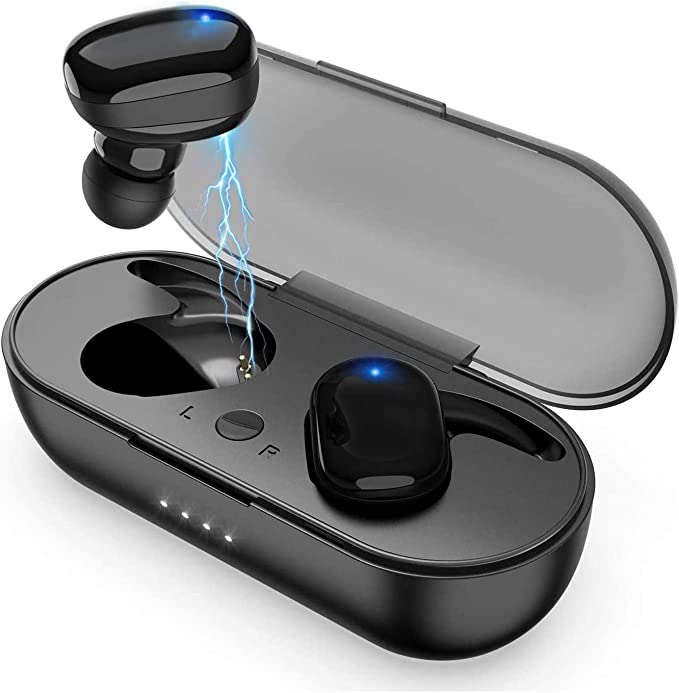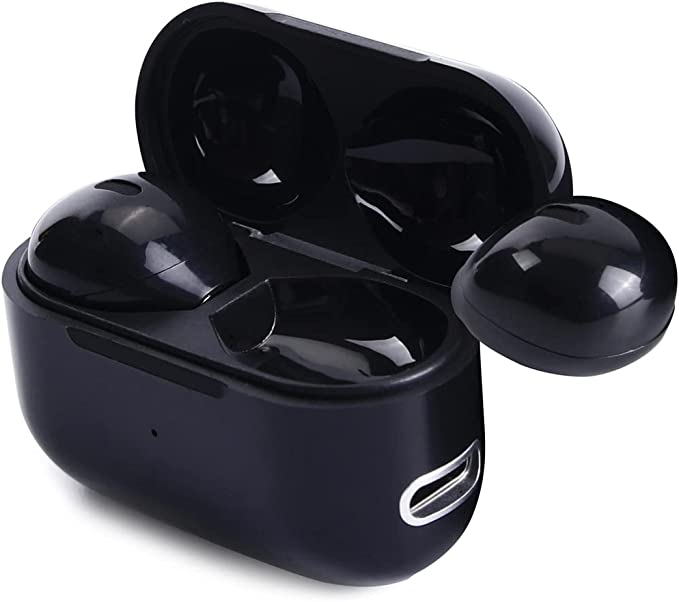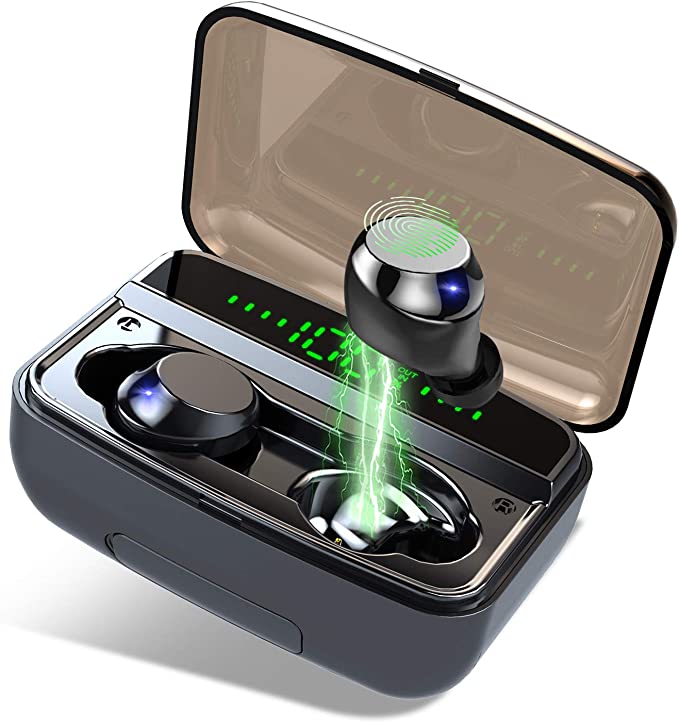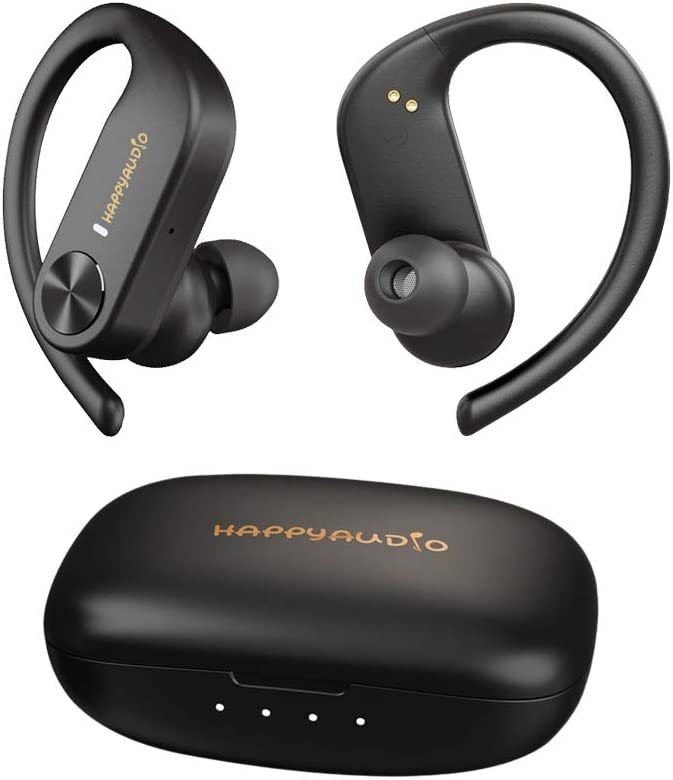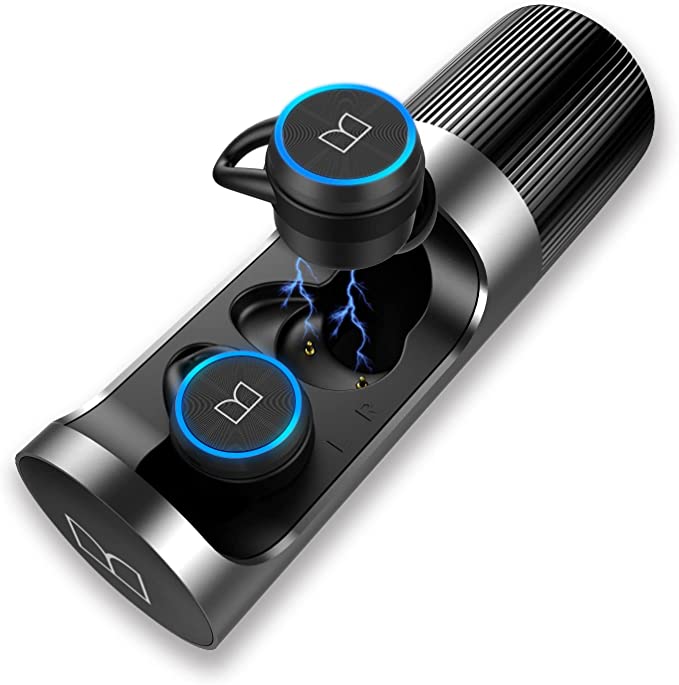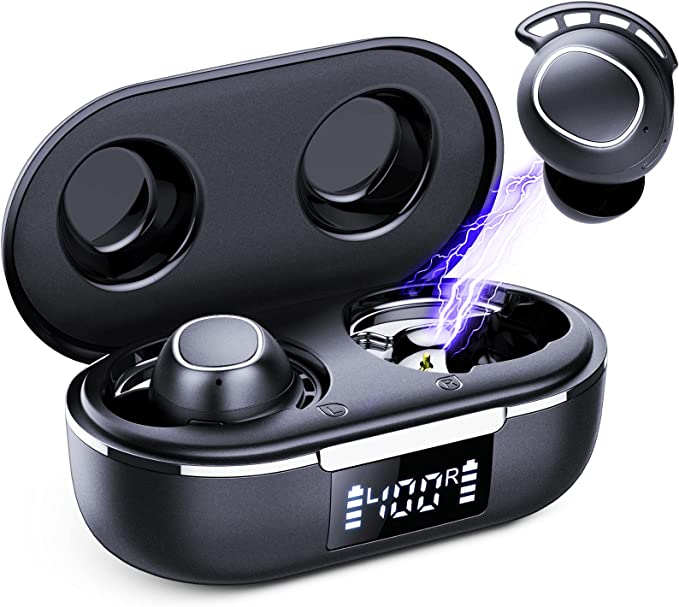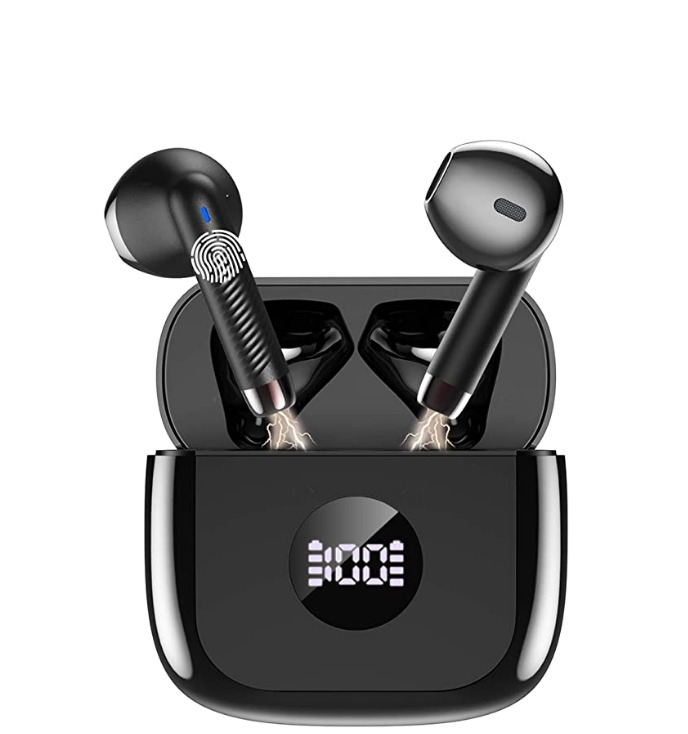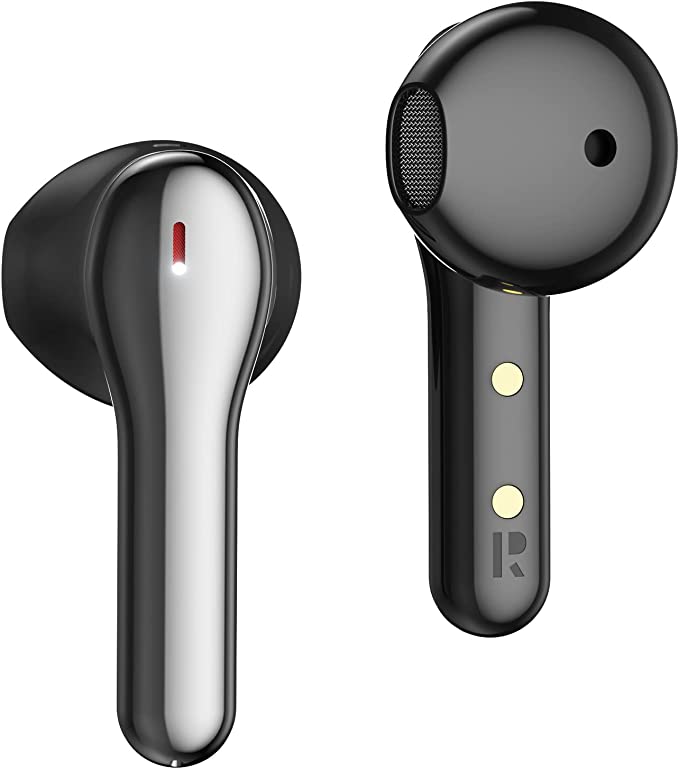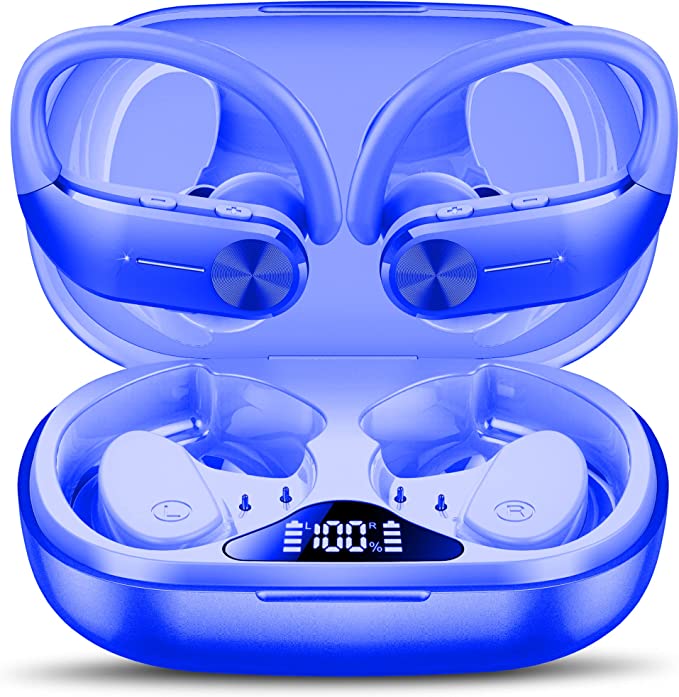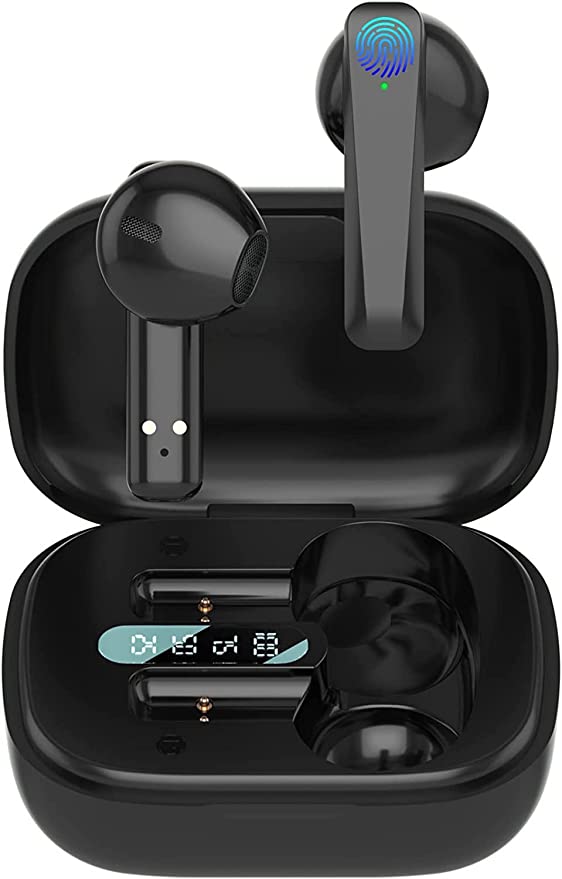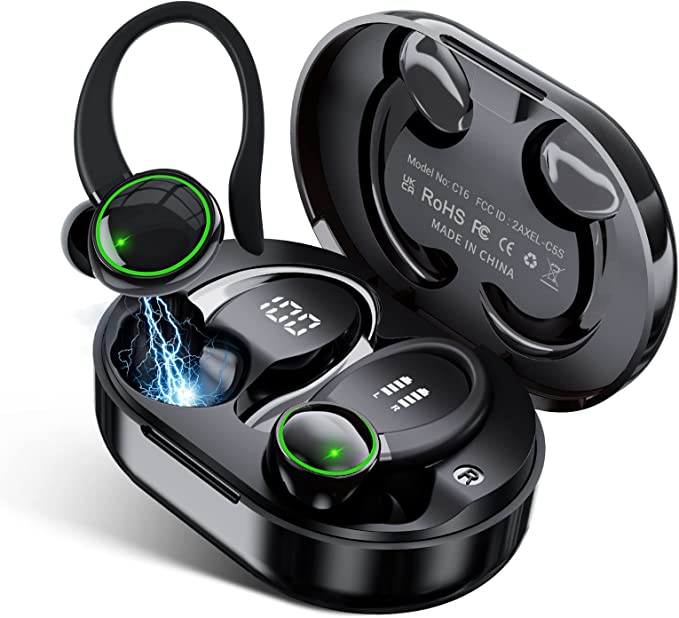Donerton C5S Wireless Earbuds: Unpacking the Science Behind All-Day Audio, Robust Waterproofing, and Seamless Connectivity
Update on May 15, 2025, 12:43 p.m.
In the symphony of our daily lives, a quiet revolution has taken place, nestled comfortably within our ears. Wireless earbuds, once a novelty, have become nearly ubiquitous, transforming our commutes, workouts, and quiet moments into personalized soundscapes. They are our invisible companions, delivering podcasts during morning jogs, thumping a beat through intense gym sessions, or whispering audiobooks as the world rushes by. Among this new wave of personal audio technology is the Donerton C5S, a pair of wireless earbuds that, like many of its contemporaries, promises a blend of convenience, performance, and durability. But beyond the marketing claims and feature lists lies a fascinating tapestry of scientific principles and engineering ingenuity. Our journey today is to gently pull back the curtain on devices like the Donerton C5S, not merely to review a product, but to appreciate the intricate, often invisible, science that makes these pocket-sized powerhouses possible. Let’s explore the everyday extraordinary.

The Invisible Handshake: Bluetooth 5.0 and the Quest for Seamless Connection
The very essence of “wireless” earbuds hinges on a technology whose name, surprisingly, harks back to a 10th-century Viking king, Harald “Bluetooth” Gormsson, famed for uniting Danish tribes. Just as King Harald brought people together, Bluetooth technology was conceived in the late 1990s by a consortium of companies (notably Ericsson, IBM, Intel, Nokia, and Toshiba) to unite disparate electronic devices, replacing the tangle of proprietary cables. What began as a modest cable-replacement technology has blossomed into a sophisticated wireless standard, and the Bluetooth 5.0 found in the Donerton C5S represents a significant evolutionary step.
But what does a version number like “5.0” truly signify for your listening experience? It’s far more than an incremental update. Bluetooth operates in the crowded 2.4 GHz Industrial, Scientific, and Medical (ISM) radio band, the same digital neighborhood frequented by Wi-Fi routers, microwaves, and a host of other devices. To navigate this bustling environment and maintain a clear, stable connection – what Donerton describes as an “ultra-stable connection” – Bluetooth 5.0 employs clever techniques like rapid frequency hopping. Imagine it as a nimble dancer deftly switching steps 1,600 times per second across 79 different channels, always finding a clear path to communicate. This dramatically reduces interference, leading to fewer frustrating dropouts.
Compared to its predecessors, Bluetooth 5.0 offers tangible improvements in speed and range. While the maximum theoretical range is often quoted, in practical terms for earbuds, this translates to a more robust and reliable link to your phone, even if it’s in your pocket or a nearby bag. It also boasts significantly lower energy consumption (Bluetooth Low Energy or BLE is a core part of the standard), a critical factor for small, battery-powered devices like earbuds, contributing directly to their ability to last for hours on a single charge.
The science of pairing, too, has been refined. Gone are the days of clunky, multi-step connection rituals. With Bluetooth 5.0, the initial “handshake” between the Donerton C5S and your device is quicker and more reliable. Subsequent connections are often seamless – what the manufacturer calls “one-step pairing” – where the earbuds automatically reconnect to the last paired device almost instantaneously upon being removed from their charging case. This isn’t magic; it’s sophisticated software and hardware working in concert, remembering previous connections and efficiently re-establishing them. For the user, this translates to the effortless experience of simply putting in your earbuds and having your audio ready to go, a small but significant piece of everyday technological grace. And when it comes to calls, the “in-call stereo sound” mentioned for the C5S is a direct beneficiary of Bluetooth 5.0’s enhanced data handling capabilities, allowing for richer, more natural-sounding conversations.

Crafting Your Personal Concert Hall: The Nuances of Hi-Fi Stereo and Acoustic Serenity
The term “Hi-Fi,” short for High Fidelity, has been an audiophile buzzword for decades, signifying a quest for sound reproduction that is exceptionally faithful to the original recording. When applied to a compact device like the Donerton C5S, which promises “Hi-Fi stereo sound quality,” it speaks to an ambition to deliver a rich, detailed, and immersive listening experience, despite the inherent size constraints.
At the heart of this auditory journey from a digital file on your phone to the sound waves caressing your eardrums are audio codecs. Think of codecs like highly skilled translators, converting complex digital audio information into a format that Bluetooth can efficiently transmit, and then back into a signal the earbud’s drivers can understand. The Donerton C5S utilizes common codecs like AAC (Advanced Audio Coding) and SBC (Subband Coding). SBC is the universal default for Bluetooth audio, a jack-of-all-trades ensuring basic compatibility. AAC, often favored by Apple devices but widely supported, is generally capable of delivering better perceived sound quality than SBC at similar bitrates, particularly for music. These codecs employ “lossy” compression, meaning some data is discarded to reduce file size for wireless transmission. The art lies in discarding data that is least likely to be perceived by the human ear, aiming to preserve the essence and detail of the music.
Inside each tiny C5S earbud is a driver – a miniature loudspeaker. This is the engine that converts the electrical audio signal back into physical sound waves. While the specific materials and design of the drivers in the C5S aren’t detailed in the provided information, the goal of any such driver is to vibrate with precision, reproducing the wide range of frequencies present in music and speech. Achieving what Donerton describes as a “truly natural and authentic sound performance with focus on getting a clear midrange and a balanced bass and treble performance” is a delicate balancing act of driver design, the acoustic properties of the earbud casing, and electronic tuning. The midrange is crucial for vocal clarity, while balanced bass and treble ensure that low notes have impact without muddiness, and high notes are crisp without being harsh.
Complementing the active sound reproduction is passive noise cancellation. This isn’t a powered electronic feature like its “active” counterpart (ANC), but rather a result of smart physical design. The in-ear form factor of the Donerton C5S, when a user selects the correct size of ear tip to achieve a snug seal, physically blocks out a significant amount of ambient noise. This acoustic seal acts like a barrier, reducing the intrusion of external sounds, much like wearing earplugs. This allows you to become more immersed in your audio content without needing to increase the volume to dangerous levels to overcome background chatter or traffic noise, creating a more intimate and focused listening environment – your personal, albeit miniature, concert hall.

The Marathoner’s Heart: Engineering 80 Hours of Auditory Freedom
One of the most striking claims for many true wireless earbuds, including the Donerton C5S, is an expansive total playtime – in this case, up to “80 hours.” This impressive figure isn’t about a single, Herculean battery within the tiny earbuds themselves, but rather a clever synergy between the earbuds and their portable charging case. It’s a testament to advancements in battery technology and power management.
The earbuds themselves, as per Donerton’s information, can last for “over 5 hours playtime on a single charge.” This stamina is primarily fueled by Lithium-polymer (Li-Po) batteries. These are a type of rechargeable battery that has become a mainstay in portable electronics due to its high energy density (meaning more power packed into a smaller, lighter package), flexible form factor, and relatively good safety profile compared to some older lithium-ion chemistries. The efficiency of Bluetooth 5.0, with its Low Energy protocols, also plays a vital role in making the most of every milliamp-hour stored in these tiny cells.
The real magic behind that 80-hour figure, however, lies within the charging case. This unassuming cradle does more than just store and protect your earbuds; it acts as a dedicated power bank or, to use a more evocative analogy, a portable fuel station for your audio companions. The case houses its own, significantly larger, Li-Po battery. Donerton states it can recharge the C5S earbuds “up to 16 times.” So, each time you finish a listening session and nestle the earbuds back into their magnetic slots, they immediately begin to draw power from the case, topping up their internal batteries. This cycle of use and recharge, drawing from the case’s larger reservoir, is what accumulates to that impressive 80-hour total playtime.
For a user, this engineering feat translates into a profound sense of auditory freedom. Imagine embarking on a long-haul flight, a weekend camping trip, or simply navigating a busy week filled with workouts and commutes, all without the nagging anxiety of constantly needing to find a power outlet. As some user reviews anecdotally confirm, the longevity of the battery system is a highly valued feature, allowing the Donerton C5S to be a reliable audio partner for extended periods, truly enabling “workouts whole day!” or even several days of typical use before the case itself needs a recharge. This extended operational leash is a cornerstone of the true wireless convenience.

Braving the Elements (and the Occasional Mishap): The True Grit of IPX8 Waterproofing
In our increasingly mobile and active lives, our electronic companions are expected to keep pace, regardless of the weather or the intensity of our activities. For wireless earbuds like the Donerton C5S, which boast an IPX8 waterproof rating, this signifies a robust defense against one of electronics’ oldest nemeses: water.
But what exactly does “IPX8” mean? The “IP” stands for Ingress Protection, a standard (IEC 60529) developed by the International Electrotechnical Commission to classify the degree of protection provided by electrical enclosures against the intrusion of foreign objects (like dust and dirt) and moisture. The rating typically consists of two digits. The first digit relates to protection against solid particles. In the “IPX8” designation for the C5S (as presented in the product title), the ‘X’ indicates that the device has not been specifically rated for dust protection by the manufacturer according to this standard, or that the rating is not being claimed for this aspect. This doesn’t necessarily mean it has no dust protection, just that it’s not the certified highlight here.
The second digit, ‘8’ in this case, is crucial as it denotes the level of protection against water. An ‘8’ is one of the highest ratings for water ingress. It means the Donerton C5S earbuds are protected against the effects of continuous immersion in water under conditions specified by the manufacturer, which are typically more severe than simply being splashed. This usually involves submersion beyond 1 meter for a defined period. According to Donerton, this robust sealing allows the C5S to be “safe in the heavy rain or sweat,” permits users to “wear it to take shower,” and even allows the earbuds to “be rinsed clean under the tap.”
Achieving this level of waterproofing in such a small device is a significant engineering challenge. It involves meticulous design of the earbud casing, the use of specialized water-resistant materials, and the implementation of precision seals and gaskets around any openings, such as charging contacts or microphone ports. Sometimes, internal components might also be treated with hydrophobic (water-repelling) coatings as an additional layer of defense.
For the user, an IPX8 rating translates into peace of mind. Whether you’re caught in an unexpected downpour during your commute, sweating profusely during a high-intensity workout, or, as one particularly adventurous user (Isaac) reported, your earbuds accidentally take a trip through a washing machine and emerge unscathed, this rating signifies a level of durability that can withstand many of life’s aquatic curveballs. However, it’s important to temper expectations with a dose of reality, as some users (like Layla and Sofi P.) have noted: while the earbuds might survive submersion, water flow (like in a shower) can sometimes interfere with touch controls or even momentarily affect the stability of the Bluetooth connection. The IP rating guarantees a high degree of water resistance for the electronics, not necessarily flawless operation under all wet conditions. Also, as Donerton wisely advises with a small warning label, it’s crucial to ensure the earbuds are dry before placing them back in the charging case to prevent any potential issues with the charging contacts.

The Whispers and the Commands: Microphone Clarity and Intuitive Control
Beyond listening, wireless earbuds have become indispensable tools for communication. The Donerton C5S integrates an “HD mic” to facilitate clear conversations, enabling “in-call stereo sound.” The microphones in modern earbuds are typically MEMS (Micro-Electro-Mechanical Systems) microphones. These are incredibly tiny silicon-based devices that offer good sensitivity, low power consumption, and resistance to vibration – all ideal characteristics for a compact, wearable device. Capturing your voice clearly amidst ambient noise is a constant challenge, and while advanced noise-canceling microphone arrays are found in higher-end models, even a well-placed standard MEMS microphone in the C5S aims to deliver your voice with clarity to the person on the other end of the call.
Interacting with your audio and calls without constantly reaching for your phone is a key convenience of wireless earbuds. The Donerton C5S employs touch controls, allowing users to manage playback (play/pause, next/previous track), adjust volume, and handle calls with simple taps or presses on the earbuds themselves. These controls typically rely on capacitive touch sensor technology. Your body, being electrically conductive, can store a small electrical charge. When your fingertip touches the sensor surface on the earbud, it changes the local electrostatic field or capacitance at that point. The earbud’s microcontroller detects this change and interprets it as a specific command. This technology allows for a sleek, button-free design. However, as some user feedback (from Maxteach and Layla) suggests, these touch controls, while convenient, can sometimes be sensitive, leading to accidental activations if an earbud is brushed by hair or adjusted in the ear, requiring a period of acclimatization for some users.
Finally, the very form factor – “In Ear” – plays a multi-faceted role. As discussed, it’s fundamental to passive noise cancellation. It also influences comfort and stability. While the product description doesn’t delve into extensive ergonomic research, the goal is always a secure yet comfortable fit that can endure movement during sports or workouts. However, human ears come in a vast array of shapes and sizes, and what’s comfortable for one person might be less so for another. User Layla, for instance, found the C5S “not small ear friendly,” highlighting that achieving a universal fit with in-ear devices is an ongoing ergonomic challenge for designers. The “multi-mode” functionality, allowing stereo or mono use, adds a layer of flexibility, catering to situations where you might want to keep one ear open to your surroundings or even share an earbud.

Coda: The Everyday Extraordinary
Our exploration of the Donerton C5S wireless earbuds reveals a microcosm of the sophisticated science and meticulous engineering that we often carry, unnoticed, in our pockets and ears. From the invisible dance of Bluetooth radio waves ensuring a stable connection, to the precise mechanics of miniature drivers crafting our personal soundscapes; from the impressive endurance of advanced battery chemistry to the resilient seals fending off the elements – these are not just features, but the results of decades of scientific advancement and innovation.
Devices like the C5S serve as a potent reminder that even the most accessible technology is built upon layers of complex problem-solving. Understanding a little of the “how” and “why” behind these everyday companions doesn’t diminish their magic; rather, it enhances our appreciation for the human ingenuity that makes them possible. As personal audio technology continues its relentless march towards becoming even smaller, smarter, and more seamlessly integrated into the fabric of our lives, it’s an exciting time to listen in and marvel at the everyday extraordinary.
